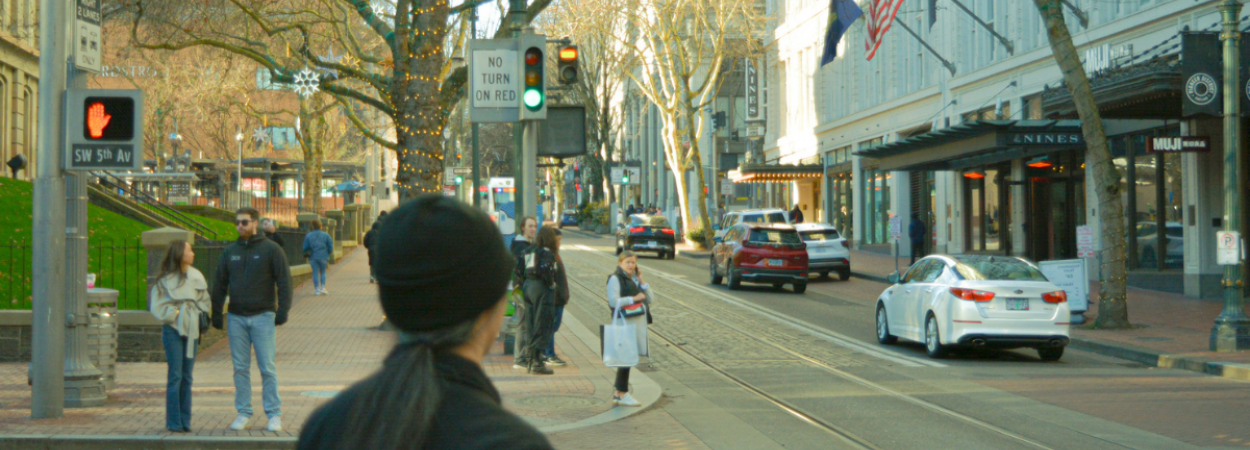Many states, including Oregon, are adopting the Safe System approach to improve traffic safety. One key element of this approach is safer speeds. To help make Oregon's road safer for everyone, Portland State University (PSU) is launching a new study, funded by the Oregon Department of Transportation (ODOT), to improve safety at intersections using traffic signals.
The project is led by Sirisha Kothuri of Portland State's civil and environmental engineering department, with Patrick Singleton of Utah State University.
It is generally accepted that automobile speeds play a key role in safety: The faster a car is traveling, the greater the risk of severe injury to vulnerable road users in a collision (especially people who are walking or bicycling). Most pedestrian crashes occur on higher-speed, multi-lane arterials.
To manage speed in the urban environment, one emerging strategy is to use traffic signals. Traditional traffic signal timing strategies have prioritized vehicle travel at the expense of other users such as pedestrians, and do not directly account for the safety of road users.
Traffic signal control strategies to improve the pedestrian experience (including safety) exist, but few have been evaluated for their effectiveness. Strategies include reducing cycle lengths, adjusting signal timing based on traffic volumes, time of day schedule changes, and resting on red (where the light stays red for longer at intersections with high pedestrian traffic, so that cars must come to a complete stop before proceeding through the intersection). This study proposes to evaluate the effectiveness of traffic signal control strategies for speed management at multiple Oregon intersections.
The team will collect and analyze data on how different signal strategies affect safety and operations, both on a short-term and longer-term basis. The primary research objectives are to:
- Evaluate the effectiveness of traffic signal control strategies for speed management on safety-related and operational indicators at multiple Oregon intersections,
- Develop guidance for agencies on the use of traffic signals to manage speeds.
Once the researchers have produced guidance based on their findings, ODOT and other agencies will be able to use this guidance to determine the most effective signal strategies to use at various types of intersections, to ensure safe speeds and efficient travel for all road users.
The research stands to advance safety for people walking, driving, rolling or bicycling through signalized intersections.
Photo by Eugene Bartolome/iStock
Portland State University's Transportation Research and Education Center (TREC) is a multidisciplinary hub for all things transportation. We are home to the Initiative for Bicycle and Pedestrian Innovation (IBPI), the data programs PORTAL and BikePed Portal, the Better Block PSU program, and PSU's membership in PacTrans, the Pacific Northwest Transportation Consortium. Our continuing goal is to produce impactful research and tools for transportation decision makers, expand the diversity and capacity of the workforce, and engage students and professionals through education, seminars, and participation in research. To get updates about what's happening at TREC, sign up for our monthly newsletter or follow us on social media.




